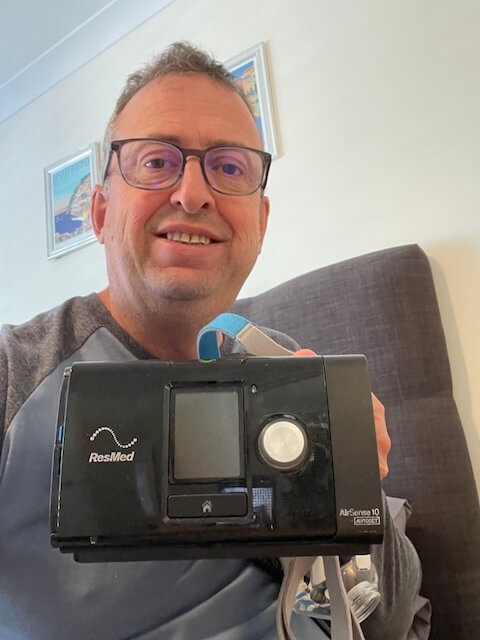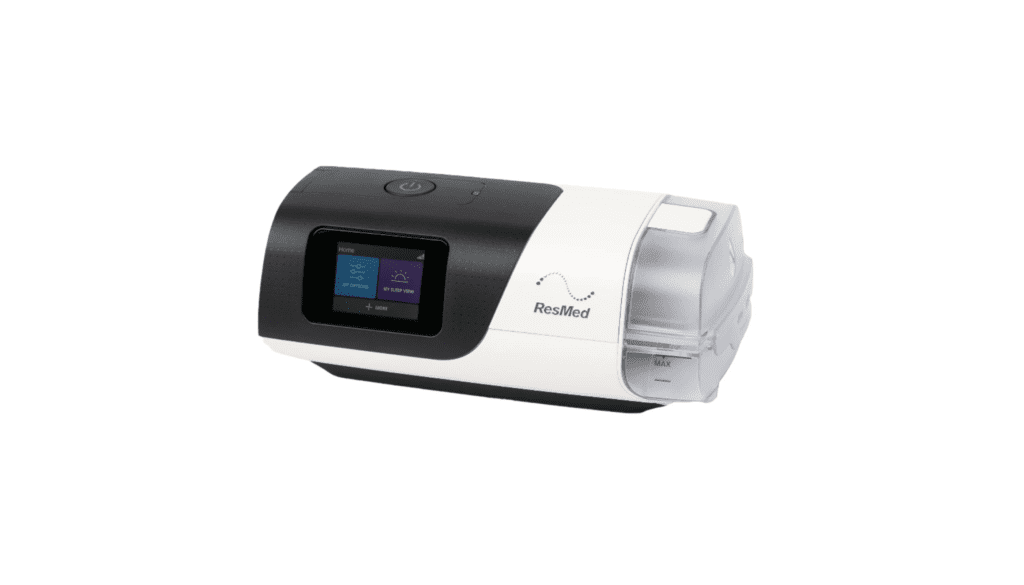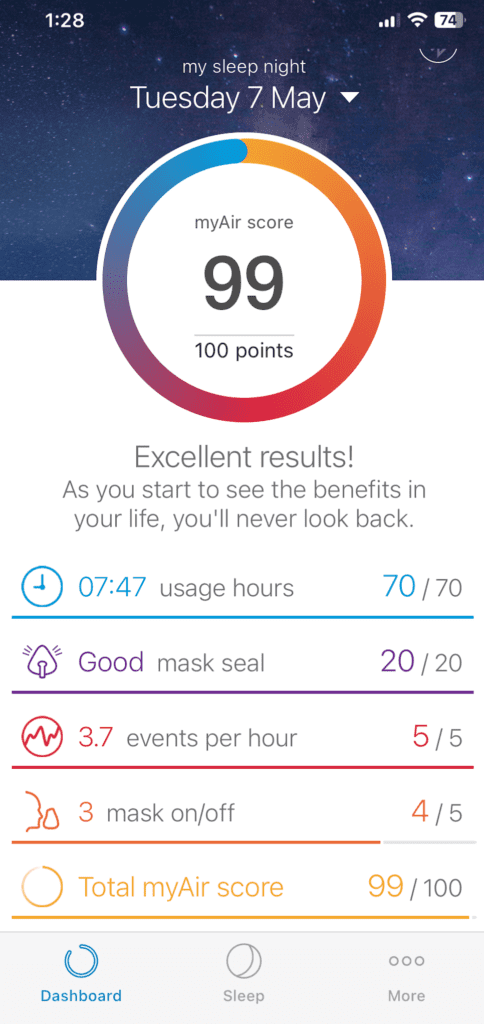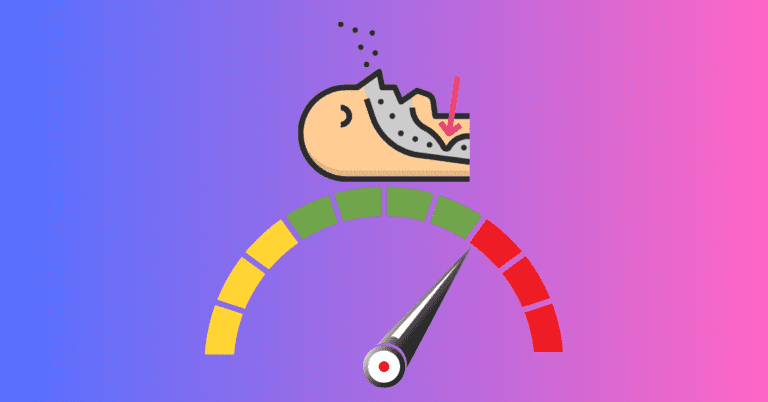CPAP Events Per Hour: What It Means and How to Lower It
Jeremy Smith is a long-term CPAP user and sleep apnea advocate. After being diagnosed with severe obstructive sleep apnea, he created ByJeremySmith.com to help others navigate CPAP therapy through personal stories, gear reviews, and practical advice.
When I first started CPAP therapy, one of the numbers that confused me most was “events per hour.” I knew mine was ridiculously high because I had been diagnosed with severe obstructive sleep apnea. But I wanted to know more.

I’d wake up in the morning, check my machine, and see a number like 2.4 or 5.1. Was that good? Bad? Should I be worried? I knew it was an improvement on 50, but was it that good?
If you’ve ever stared at your CPAP readout wondering the same thing, welcome to the club.
Let’s break down what CPAP events per hour means, what’s normal, and most importantly, how to lower events per hour on CPAP for better sleep and long-term health.
📊 What Are Events Per Hour on CPAP?
The term “events per hour” refers to how many times you stop breathing or have significantly reduced airflow during sleep, per hour.
These are called apneas or hypopneas. Your CPAP machine tracks them throughout the night and reports an average, also known as your AHI (Apnea-Hypopnea Index).
So when you see a number on your machine’s screen, like 0.7 events per hour or 0.9 events per hour on CPAP, that means your machine detected fewer than one breathing event per hour. That’s fantastic! It means your therapy is doing exactly what it should.
❓ What Does Events Per Hour Mean on CPAP?
To put it simply, it’s a measurement of how well your CPAP therapy is working. The lower your events per hour, the more effective your treatment is at keeping your airway open.
It’s worth noting that even with therapy, some events are normal. The goal isn’t always zero—but rather to keep it within the range considered “treated.”
✅ How Many Events Per Hour Is Normal With CPAP?
Most sleep doctors agree:
- 🟢 0–5 events/hour = Treated/Normal range
- 🟡 5–15 events/hour = Mild sleep apnea
- 🟠 15–30 events/hour = Moderate sleep apnea
- 🔴 30+ events/hour = Severe sleep apnea
If you’re asking how many events per hour is normal with CPAP, the answer is less than 5. That means your machine is doing its job, and your therapy is considered effective.
So, if you have 13 events per hour with CPAP, then that is classified as mild sleep apnea.
📉 AHI Sleep Apnea Severity Levels
The AHI sleep apnea severity scale is the standard your doctor uses to diagnose and track progress:
- 🟩 AHI < 5: Normal
- 🟨 AHI 5–15: Mild sleep apnea
- 🟥 AHI 15–30: Moderate sleep apnea
- ⛔ AHI > 30: Severe sleep apnea
Even with CPAP, some users see occasional spikes. That’s why consistent tracking is key to staying on top of your health.

This is my favorite CPAP machine, the ResMed AirSense 11 AutoSet
🔧 How to Lower Events Per Hour on CPAP
If your AHI is higher than 5, it might be time to make some adjustments. Here are proven tips to help lower your events per hour and improve your therapy results:
🛠️ 1. Check for Mask Leaks
Leaks can let air escape and reduce the pressure needed to keep your airway open. Make sure your mask fits well and isn’t shifting during the night. Try a mask liner if you need extra stability.
⚙️ 2. Adjust Your Pressure Settings
Sometimes the default pressure isn’t enough. Talk to your sleep specialist before making changes, but don’t hesitate to ask if a pressure increase could help.
😷 3. Try a Different Mask Style
A full-face mask might work better than nasal pillows—or vice versa—depending on your anatomy and how you sleep. Everyone’s different, and finding the right match can lower your AHI.
🛏️ 4. Change Your Sleeping Position
Back sleeping can worsen apnea for many people. Try sleeping on your side or using a CPAP-friendly pillow that encourages proper alignment.
🥗 5. Watch Your Weight and Lifestyle
Extra weight, alcohol before bed, and certain medications can all increase your AHI. Even small lifestyle changes—like cutting back on evening drinks—can make a big difference.
💧 6. Use a Humidifier
If your airway is dry or irritated, it might affect how well your CPAP works. A heated humidifier can ease discomfort, help you sleep more deeply, and reduce events.
🧠 Final Thoughts
Understanding your CPAP events per hour score is one of the most important steps in taking charge of your sleep therapy. Whether you’re seeing 0.7 events per hour on CPAP or something higher, it’s all about using the data to guide improvements.
💡 If your numbers are creeping up, don’t panic. There are plenty of fixes—and you’re not alone on this journey.
Finally, don’t be concerned if your numbers fluctuate slightly, but if you see large changes, then please go back to your doctor or sleep specialist.
If you have a ResMed CPAP Machine, then you can make use of their really cool MyAir app that you can track on your phone, and it automatically sends you tips if it sees any changes.

I got one just yesterday about my CPAP events per hour fluctuating, which inspired me to write this article today 🙂
Disclaimer: The content on this blog is for informational and educational purposes only and is not a substitute for professional medical advice. Always speak with your doctor or sleep specialist before starting, stopping, or changing any treatment or therapy related to sleep apnea or CPAP use.





